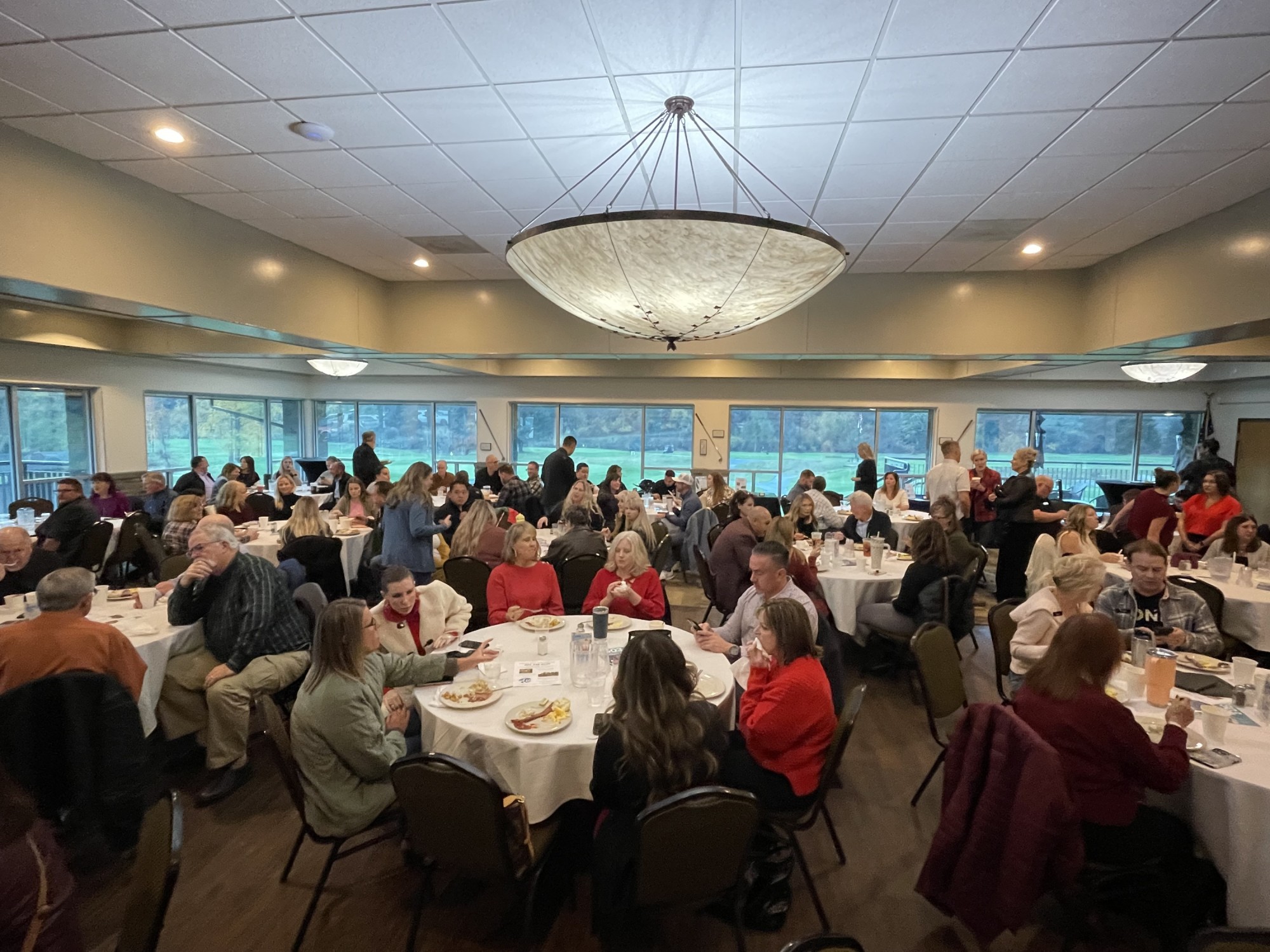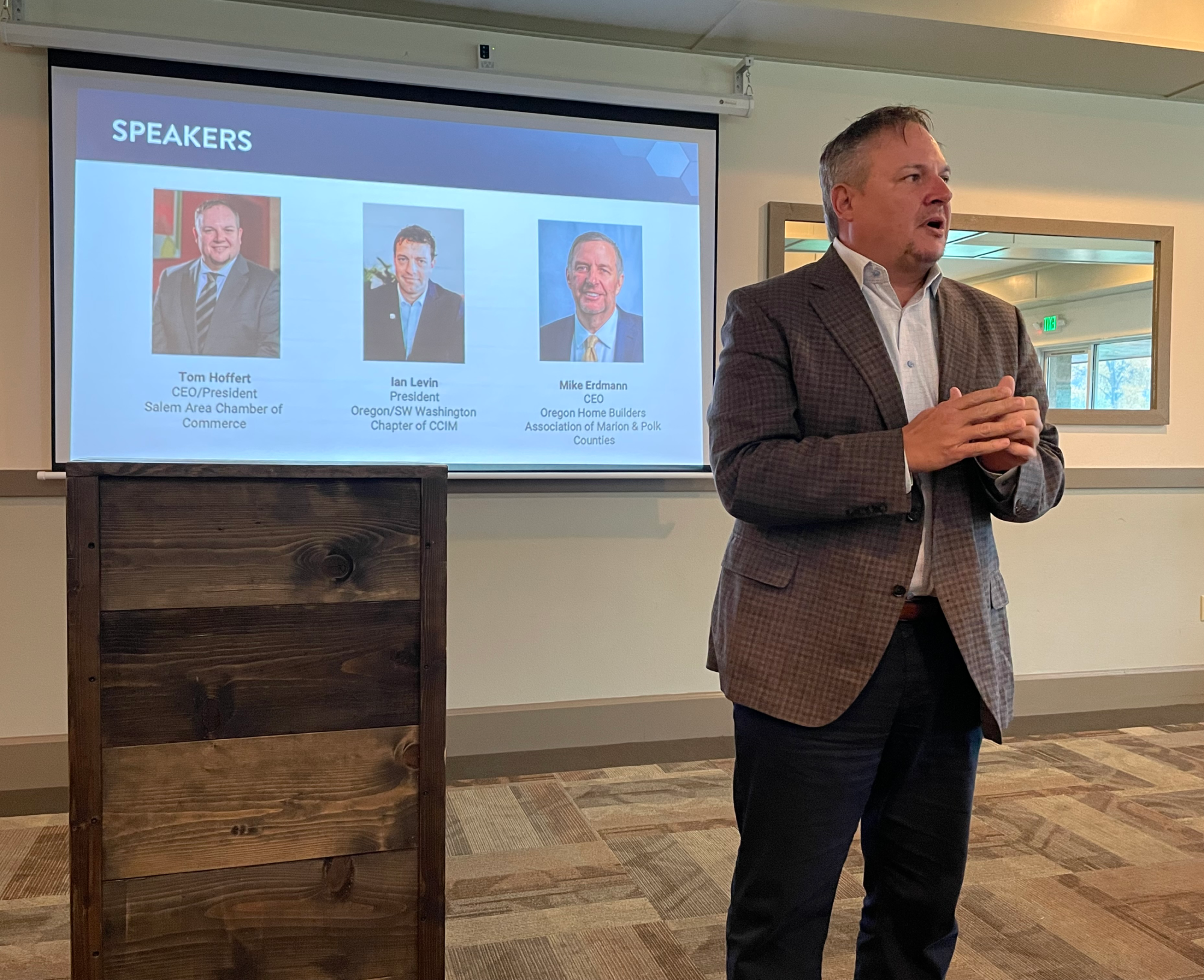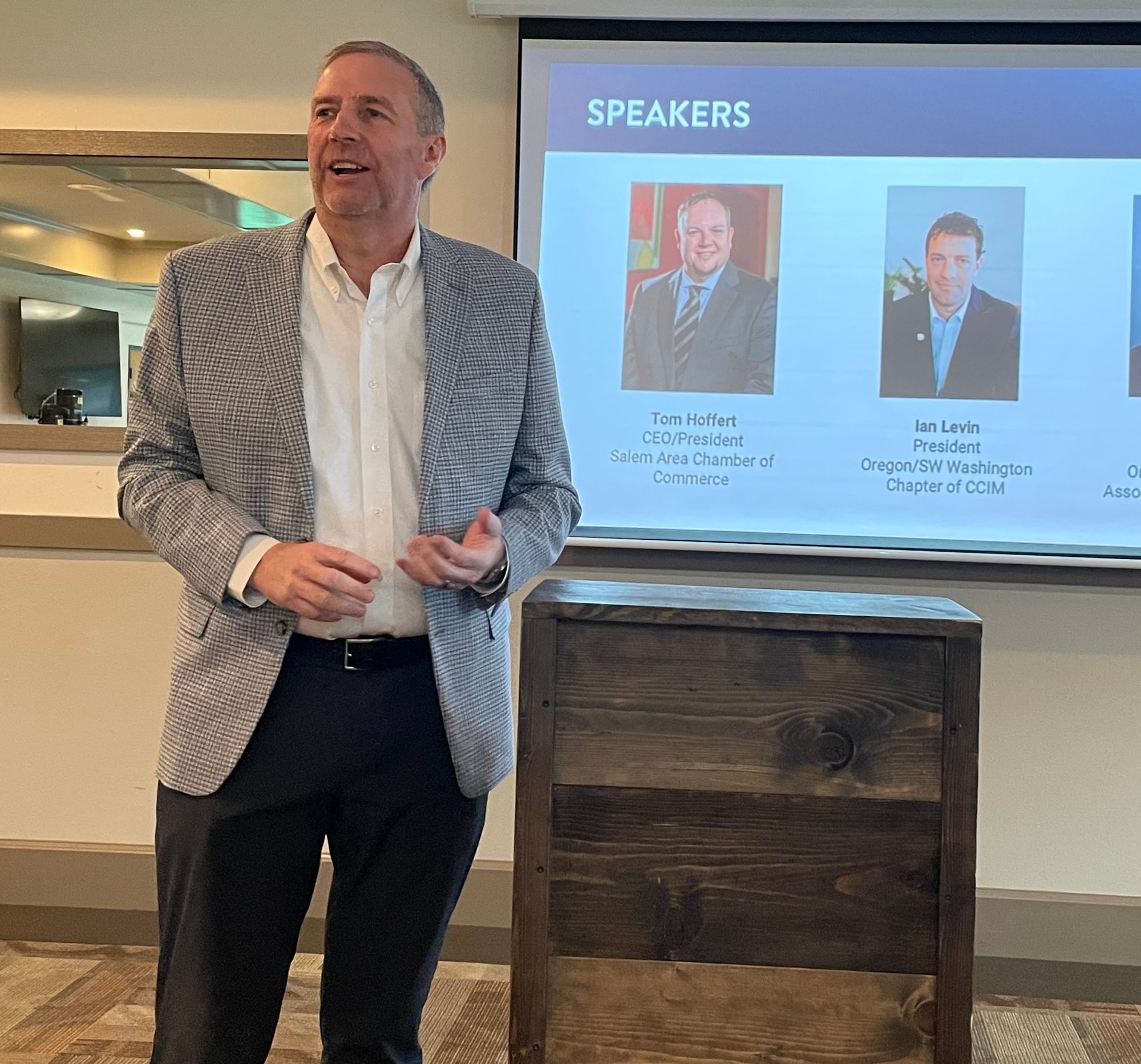MVAR Members Hear Overview of Salem Business Climate
November 21, 2025
 From increasing taxes to regulatory hurdles, the business and real estate climate in Salem has experienced its share of challenges in recent years. That’s why pro-development organizations like MVAR are critical to advocate for members and strive for commonsense solutions that help communities and small businesses thrive.
From increasing taxes to regulatory hurdles, the business and real estate climate in Salem has experienced its share of challenges in recent years. That’s why pro-development organizations like MVAR are critical to advocate for members and strive for commonsense solutions that help communities and small businesses thrive.
At our November General Membership Meeting, we heard from leaders of three like-minded groups, including the Salem Area Chamber of Commerce, Home Builders Association of Marion & Polk Counties, and CCIM Oregon/SW Washington Chapter. They provided valuable insights into what’s happening in the local economy, and what we can expect heading into 2026.
Cherriots Tax
 Tom Hoffert, CEO of the Salem Chamber, kicked things off with an update on Cherriots’ proposed payroll tax, which would collect an estimated $39 million per year from Salem-Keizer employers and sole proprietors.
Tom Hoffert, CEO of the Salem Chamber, kicked things off with an update on Cherriots’ proposed payroll tax, which would collect an estimated $39 million per year from Salem-Keizer employers and sole proprietors.
Under legislation passed in 2018, Cherriots is allowed to impose this tax without a public vote. Earlier this year, both MVAR and the Salem Chamber joined a six-organization business coalition (along with the Keizer Chamber of Commerce, West Salem Business Association, Home Builders Association of Marion & Polk Counties, and SEDCOR) urging the Cherriots Board of Directors to “reset the table,” as Hoffert explained.
“The reality is that every dollar taken out of our small business community is one less dollar going toward our employees, and one less dollar going toward philanthropic projects that we believe in,” Hoffert said.
Cherriots delayed voting on the tax in October. Hoffert said the district’s current proposal is “unequivocally non-negotiable,” costing businesses like Don Pancho Authentic Mexican Foods $260,000 in new taxation and Salem Health $4.9 million.
“These are very real dollars,” he said.
Downtown Trajectory
 Despite some gloomy media portrayals, the commercial real estate market in downtown Salem is not as bad as one might think, according to Ian Levin, President of the CCIM Oregon/SW Washington Chapter.
Despite some gloomy media portrayals, the commercial real estate market in downtown Salem is not as bad as one might think, according to Ian Levin, President of the CCIM Oregon/SW Washington Chapter.
Levin highlighted several recent successes. The former Liberty Plaza Mall has been revitalized as The Forge, with 80% of retail space now being leased. Meanwhile, Levin said the Salem Center Mall continues to see foot traffic and Cinnabon has signed a 10-year lease to return downtown.
“You don’t see that unless businesses recognize there is a shift, and we’re on an upward trajectory,” he said. “We are seeing really good movement upward as far as occupancy rates, and that’s going to equate to more opportunity, more jobs, and more economy.”
Levin also praised efforts happening downtown to provide help for those experiencing homelessness and addiction. He mentioned instances where three individuals were able to get off the street and into housing and recovery.
Homebuilding Down
Mike Erdmann, CEO of the Home Builders Association of Marion & Polk Counties, said homebuilding is down “a fair bit” over the last several years, including 8% this year and 45% going back to 2020. The reasons, he said, are multi-faceted.
First, inventory has tightened up with fewer homeowners willing to sell. New construction now accounts for about one-third of available inventory and has struggled to keep pace due to lack of available land — particularly flat land that is less costly to develop, Erdmann said. About two-thirds of new residential units have been apartments, duplexes, and other multi-family developments.
“It’s changing the fabric of our community in terms of housing prices and what it’s forcing folks to build,” Erdmann said.
Looking ahead, Erdmann said a change in building codes is coming next year which will further tighten the screws for developers on energy efficiency. “Every code cycle, we see more and more costs,” he said.
New floodplain regulations, plus a bill targeting wage theft that passed in the 2025 Legislature could also add further costs, Erdmann said. The bill, SB 426, makes property owners and general contractors jointly and severally liable for unpaid wages.

